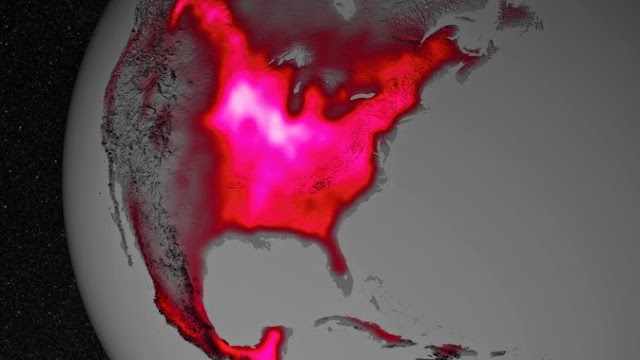Wednesday, April 30, 2014
Color Difference Sorting Experiment
Monday, April 7, 2014
Sony to bring 4K tech to surveillance cameras
If the recent flow of billions of dollars in VC capital into the data storage and analysis industry is any indication, we have evolved into compulsive data packrats. However, even billions of people cannot type all the data we hoard. It takes color imaging to produce exabytes of data. Millions of selfies and cat movies contribute to the data stash, but only machines can create "new" data at exabyte scale.
One of the most prolific kind of data generation machines are the surveillance video camera systems. With the relentless widening of the social gap, a larger proportion of the population is evolving into desperate sub-proletarians with nothing to lose. This increases home robberies and is triggering a boom for home video security systems.
On February 25 we wrote on purple disks from Western Digital (the corresponding disks from Seagate have a turquoise label) optimized for surveillance video. Unfortunately, the images the police sends to the neighbors asking for help in identifying thieves are often too blurry to clearly recognize a perpetrator.
Around 2015, Sony plans to put its 4K-resolution technology in its surveillance cameras, which will boast significantly improved picture quality. Even zoomed-in images will appear sharp. Larger CMOS sensors will be employed, and software to make effective use of the images will be developed.
This quadrupling of video image resolution will be a bonanza for the data storage industry, as the global market for surveillance cameras will grow from ¥700 billion in 2013 to nearly ¥1 trillion in 2015 ($6.791 billion to $9.402 billion).
Thursday, April 3, 2014
Half of the United States is glowing a bright pinkish red
Data from satellite sensors show that during the Northern Hemisphere's growing season, the Midwest region of the United States boasts more photosynthetic activity than any other spot on Earth, according to NASA and university scientists.
Healthy plants convert light to energy via photosynthesis, but chlorophyll also emits a fraction of absorbed light as fluorescent glow that is invisible to the naked eye. The magnitude of the glow is an excellent indicator of the amount of photosynthesis, or gross productivity, of plants in a given region. In the image below, the color red was applied to the illustration to represent the glow.
Research in 2013 led by Joanna Joiner, of NASA's Goddard Space Flight Center in Greenbelt, Md., demonstrated that fluorescence from plants could be teased out of data from existing satellites, which were designed and built for other purposes. The new research led by Luis Guanter of the Freie Universität Berlin, used the data for the first time to estimate photosynthesis from agriculture.
According to co-author Christian Frankenberg of NASA's Jet Propulsion Laboratory in Pasadena, Calif., "The paper shows that fluorescence is a much better proxy for agricultural productivity than anything we've had before. This can go a long way regarding monitoring – and maybe even predicting – regional crop yields."
Unlike most vegetation, food crops are managed to maximize productivity. They usually have access to abundant nutrients and are irrigated. The Corn Belt, for example, receives water from the Mississippi River. Accounting for irrigation is currently a challenge for models, which is one reason why they underestimate agricultural productivity.
NASA press release: Satellite Shows High Productivity from U.S. Corn Belt
PNAS paper: Global and time-resolved monitoring of crop photosynthesis with chlorophyll fluorescence





